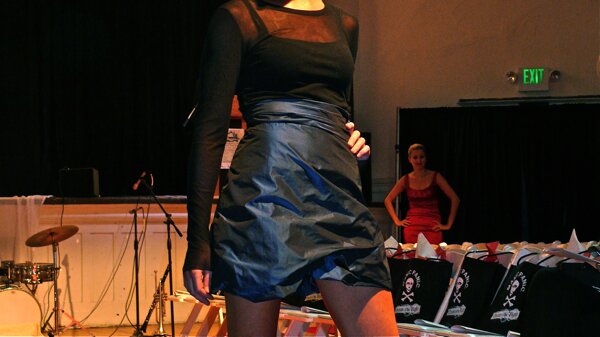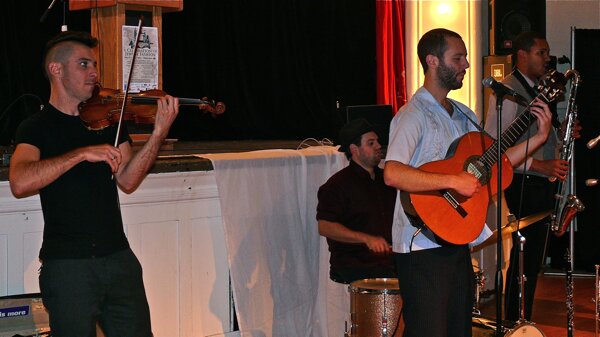 Seattle-based Women’s Funding Alliance (WFA), the leading foundation in Washington state investing in and advocating for women and girls, is confronting the issue of local sex trafficking from numerous angles with the aim of attacking the root cause of the problem through education, awareness and funding.
Seattle-based Women’s Funding Alliance (WFA), the leading foundation in Washington state investing in and advocating for women and girls, is confronting the issue of local sex trafficking from numerous angles with the aim of attacking the root cause of the problem through education, awareness and funding.
WFA will host a Town Hall forum on January 20, 2011, called “In Our Own Backyard: A Closer Look at the Sex Trafficking of Local Girls.” The event is a public forum to discuss the issue of sex trafficking, how the internet is worsening the problem, what’s being done about it, and how we can make a difference right here in Seattle to support young trafficking survivors, increase the prosecution of traffickers and predators, and curb the demand.
That event is hosted in collaboration with Seattle City Council, Seattle Human Services Department, YouthCare and Women’s Funding Network.
In January 2010, WFA approved a special, one-time grant for a three-year pilot project of the Seattle Human Services Department (SHSD) called The Bridge Program, a residential recovery program designed to help girls who have been victimized through child sexual exploitation (prostitution). (See the Seattle Times article on the program.)
WFA was able to provide funding for the program during a critical period when funds had been cut and the project’s future was uncertain....
Last Thursday's "Chai Couture," the fashion showcase for Jewish clothiers and designers, was also sponsored by Jconnect as a social occasion and benefit--which was a sold-out success. All proceeds went to support Sviva Tomehet's microloan programs for women in Israel. To supplement my photo gallery of the "Chai Couture" runway show, here's a look around Washington Hall before and after.
That's designer Cameron Levin checking out the sightlines from the corner of Washington Hall during a pre-runway show rehearsal.
Eli Rosenblatt Band supplied the Afro-Cuban music.
Runway models are great, but what about while people are waiting for the show to start? See the women above, who circulated throughout the Hall, looking fabulous in Katarina Yedidim's designs....
I haven't read that he was socked in the jaw very often, but I have to think that in dancers' dreams at least, George Balanchine was as much abused as adored.
I'm thinking of the moment in Serenade when Ariana Lallone pivots en pointe, one leg languorously outstretched, as a male dancer kneels behind her and, unseen, ever so slowly rotates her. Lallone's face is a perfect mask, her wrists, her fingers, not too tense, she's a living sculpture--and her body's weight shoots down through a single trembling, balancing ankle to a toe shoe.
My ankle sprained in sympathy.
PNB's "All Balanchine" (through April 25) may be the strongest of their celebrations of the celebrated choreographer's work that I've seen. The program of Serenade, Square Dance, and The Four Temperaments shows off Balanchine's remarkable ability to marry that Balanchine aesthetic to music. In each case, it's not a shotgun wedding, it's a love match. The audience on Saturday afternoon arrived head over heels, and applauded the curtain going up.
Serenade (from 1934) is a romantic vision set to Tchaikovsky's Serenade for Strings, the stage loaded with ballerinas in long tutus. When it was new, audiences reacted to it the way PNB audiences respond to William Forsythe. At one point, heedless of symmetry, Balanchine has everyone crowd into the far corner of the stage and crouch, while a soloist performs downstage. Oh, the humanity!
If there's a trained expectation he doesn't leave unsatisfied, I'm not sure what it is. Instead, there are chords of dancers, patterns and intersections drawn from the music, and contrasts between steps and rhythm. A few themes cut across each piece: Balanchine's regard for stillness, the way he uses it as a dash rather than a period at the end of a series. Those challenging one-legged landings from a leap. Extension that, even flat-footed, creates a sense of elevation....
BANDE-ANNONCE MON ONCLE JACQUES TATI 1958 TRAILER HQ
by kirivalse
In preparation for multiple screenings of the Hulot masterpiece, Monsieur Hulot's Holiday, in a newly restored version, SIFF Cinema is giving us one-night-only chances at Mon Oncle (1958), Playtime (1967), and Trafic (1971) this weekend, at McCaw Hall.
For some, the comedy of Jacques Tati is evidence of why the French took to Jerry Lewis with open arms--they were desperate. For others, the wry, stork-like, unsinkable Hulot, meeting the world not head-on, but in a series of gentle collisions, echoed the comedic pathos of Charlie Chaplin.
But it's also true that Hulot is just a keyhole, a way of seeing the world. MoMA's site puts it like this: "through long-take, deep-focus, all-over tableaux, a Babel of languages, and the burbling eruptions of machines gone haywire, he creates an entire cosmos, a meticulously choreographed chaos in a Cartesian world...."




Most Recent Comments